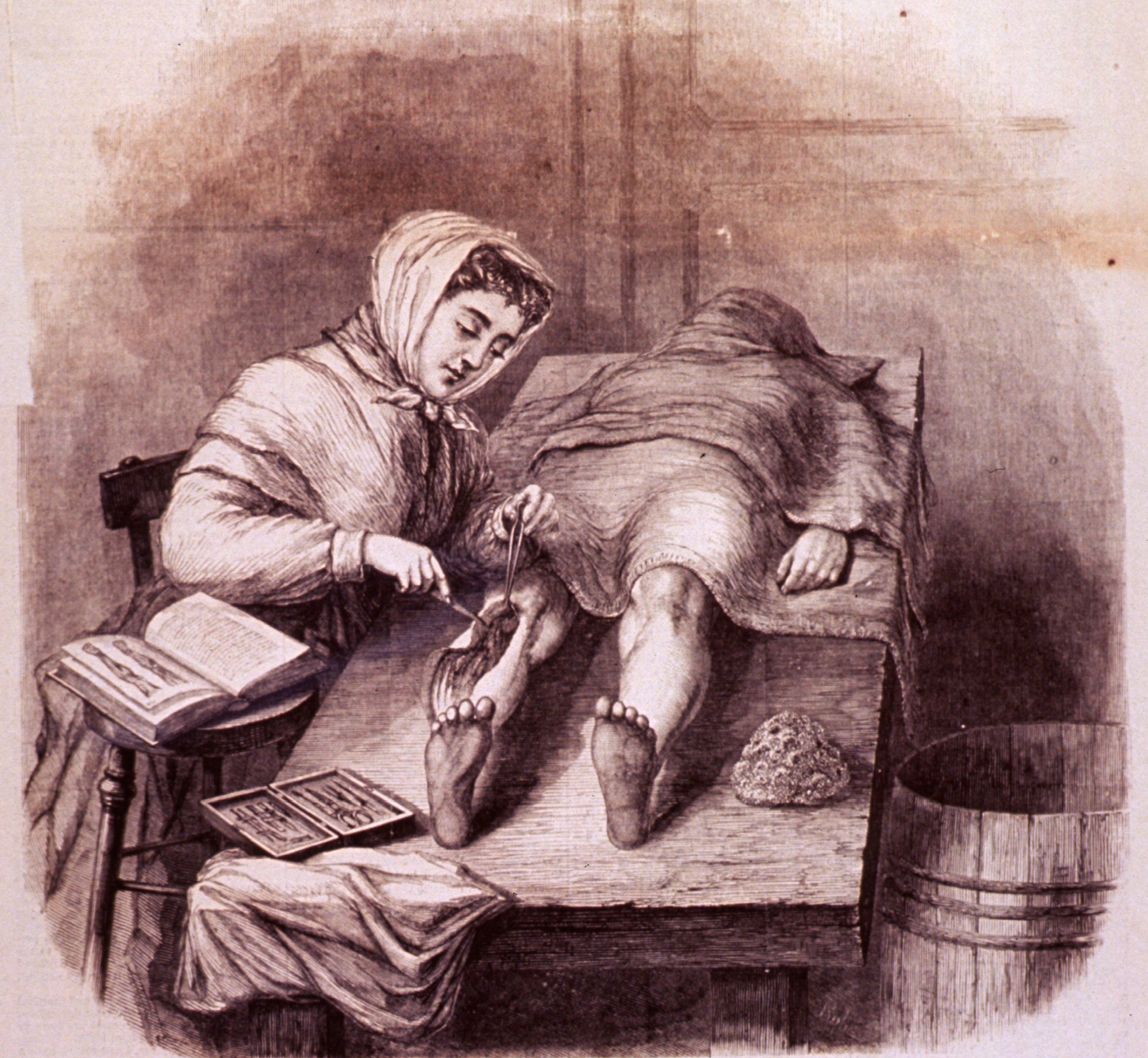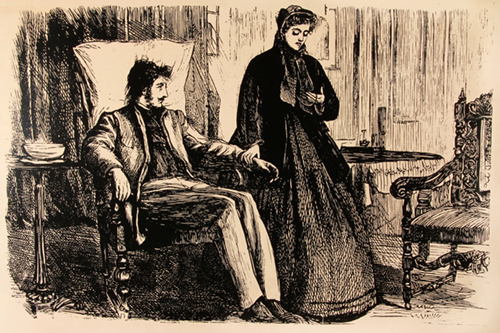On Monday, March 8, Case Daily hosted a trivia quiz in honor of women’s history month. They asked this question: “In 1876, fifty years after it was established, the first woman graduated from Western Reserve College. Who was she?” While they sought the first female graduate of our undergraduate school, it brought to mind a similar question regarding our medical school and its early women graduates. So, I pose a variant of the question appropriate for women’s history month:“Who was the first female graduate of the medical department of Western Reserve College?” The answer is simple: Nancy Talbot Clark. Going beyond, we find that her experience reveals an intriguing, complex, and instructive story about women entering the ranks of the medical profession. Permit me to elaborate.
 Nancy Talbot Clark graduated in 1852, making her the first female medical graduate of Western Reserve College and the second woman graduate of a co-ed regular (non-sectarian or allopathic) medical college in the entire Unites States. This last point is significant, for the medical establishment of 19th century America discounted the value of medical degrees conferred by sectarian (homeopathic, eclectic, &c) or all female schools. Elizabeth Blackwell merits distinction as the first woman in this country to graduate from a regular (or allopathic) co-educational medical school, having graduated from Geneva Medical College in 1849. Clark came next when she matriculated at Western Reserve, and was in turn followed by five more women who graduated before 1856. In that year Dean Delamater, who championed women’s medical education, retired and his successor, and the rest of the all-male faculty, deemed it “inexpedient” to continue admitting women. Decades passed before women again matriculated at Western Reserve.
Nancy Talbot Clark graduated in 1852, making her the first female medical graduate of Western Reserve College and the second woman graduate of a co-ed regular (non-sectarian or allopathic) medical college in the entire Unites States. This last point is significant, for the medical establishment of 19th century America discounted the value of medical degrees conferred by sectarian (homeopathic, eclectic, &c) or all female schools. Elizabeth Blackwell merits distinction as the first woman in this country to graduate from a regular (or allopathic) co-educational medical school, having graduated from Geneva Medical College in 1849. Clark came next when she matriculated at Western Reserve, and was in turn followed by five more women who graduated before 1856. In that year Dean Delamater, who championed women’s medical education, retired and his successor, and the rest of the all-male faculty, deemed it “inexpedient” to continue admitting women. Decades passed before women again matriculated at Western Reserve.
The rich narrative of Clark’s career shows clearly that the path for women entering medicine was fraught with challenge and frustration. Tragedy, misogyny, and purported moral and social propriety all conspired to thwart what might otherwise have been a promising professional life for Nancy Talbot  Clark. An early marriage in 1845 to dentist Champion Clark seemingly precluded a career at all, medical or otherwise, for society expected married women to remain at home, not enter the marketplace. At 22 she bore a daughter who died within a year, and then her husband succumbed to typhoid fever in March 1848, leaving her a young widow. How she found her way to Cleveland is unclear, but biographical notes indicate that the wife of Dean Delamater came from nearby Sharon, Massachusetts, Clark’s hometown. Whatever the route, Clark studied for two years, graduating in March 1852. The school took special notice, publishing in the local newspaper that “Among the graduates is Mrs. Nancy E, Clark of Sharon, Mass., a lady who has, during the past two sessions, commanded the respect of Instructors and members of classes by her lady-like deportment and faithful intelligent attention to her duties as a Medical Student.”
Clark. An early marriage in 1845 to dentist Champion Clark seemingly precluded a career at all, medical or otherwise, for society expected married women to remain at home, not enter the marketplace. At 22 she bore a daughter who died within a year, and then her husband succumbed to typhoid fever in March 1848, leaving her a young widow. How she found her way to Cleveland is unclear, but biographical notes indicate that the wife of Dean Delamater came from nearby Sharon, Massachusetts, Clark’s hometown. Whatever the route, Clark studied for two years, graduating in March 1852. The school took special notice, publishing in the local newspaper that “Among the graduates is Mrs. Nancy E, Clark of Sharon, Mass., a lady who has, during the past two sessions, commanded the respect of Instructors and members of classes by her lady-like deportment and faithful intelligent attention to her duties as a Medical Student.”
 Clark returned to Boston, Massachusetts, where she practiced medicine from April 1852 to August 1854, and tried unsuccessfully to gain admission to the Massachusetts Medical Society. Male members rejected her application, asserting that “their duty requires them to examine male candidates only for membership.” Like Elizabeth Blackwell before her, Clark departed for France with her physician brother. There, she studied and interned at La Maternité the premiere obstetric hospital in the French capital. On the journey over she met the recently-widowed Amos Binney of Boston, whom she later married. A family of six children ensued and predominated until 1874 when Clark opened a free dispensary for women in Boston.
Clark returned to Boston, Massachusetts, where she practiced medicine from April 1852 to August 1854, and tried unsuccessfully to gain admission to the Massachusetts Medical Society. Male members rejected her application, asserting that “their duty requires them to examine male candidates only for membership.” Like Elizabeth Blackwell before her, Clark departed for France with her physician brother. There, she studied and interned at La Maternité the premiere obstetric hospital in the French capital. On the journey over she met the recently-widowed Amos Binney of Boston, whom she later married. A family of six children ensued and predominated until 1874 when Clark opened a free dispensary for women in Boston.
By focusing this cohort of early women graduates of Western Reserve we gain a sense of the diversity of their career trajectories. No single career arc applies to these women. As noted, marriage comprised a career-ending event for Clark, despite her evident skill and talent. Emily Blackwell, younger sister of Elizabeth, followed and went on to found the New York Infirmary for Indigent Women and Children and ended her career at the London School of Medicine for Women. Marie Zakrzewska, trained as a midwife in Berlin, emigrated in hopes of becoming a physician. Prominent women of Cleveland sponsored her through the Female Medical Education Society of Ohio, and she went on to a distinguished career in women’s medical education. Cordelia Greene pursued a career in the so-called “water cure” or hydropathy movement, starting at a spa in Cleveland, and ending in a western New York water cure establishment. Sarah Chadwick’s career included a year of service as a surgeon to Civil War troops, but married afterward, and retired from medicine. Elizabeth Griselle rounded out the group, with perhaps the most conventional private medical practice in Salem, Ohio. So, we at CWRU can justly take pride in the early strides to promote women as medical professionals, but need to go beyond a cursory mention to more fully understand the challenges these pioneering women faced in their struggle to attain equality in the workplace and in society more generally.
ABOUT THE AUTHOR: James Edmonson, PhD, chief curator of Dittrick Medical History Center and Museum
For more on our pioneering medical women at Western Reserve, see
Linda Lehmann Goldstein. “Roses Bloomed in Winter: Women Medical Graduates of Western Reserve College, 1852-1856,” Case Western Reserve University, May 1989.
Linda Lehmann Goldstein, “ ‘Without compromising in any particular’: The success of medical coeducation in Cleveland, 1850-1856, Caduceus 10 (1994): 101-116.
